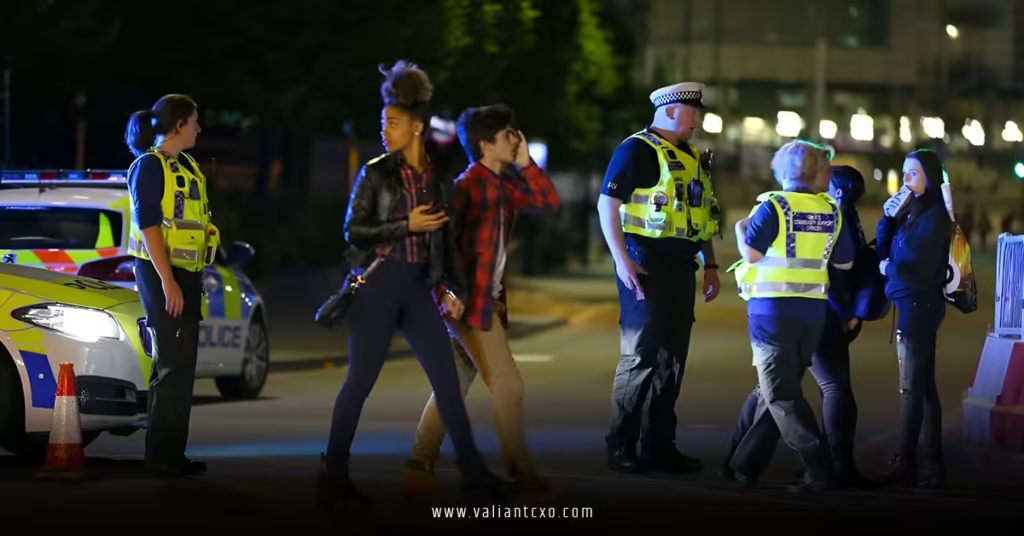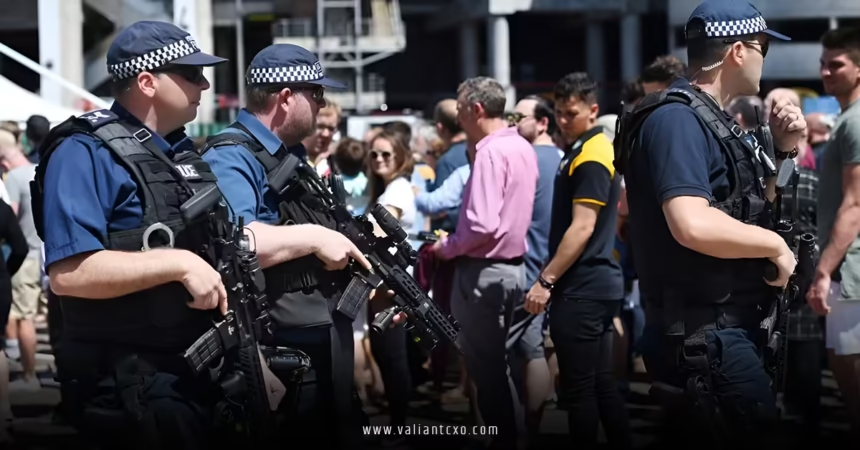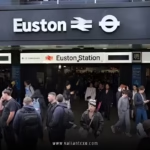What happened in the Manchester terror attack still sends chills down my spine when I think about it. Imagine wrapping up an epic night at a concert, buzzing with energy from your favorite artist’s performance, only to have everything shatter in an instant. That’s exactly the nightmare that unfolded on May 22, 2017, at the Manchester Arena in England. A suicide bomber detonated an explosive device right as fans were streaming out, turning joy into tragedy. This attack, claimed by ISIS, claimed 22 innocent lives and injured over a thousand people, many of them kids and teens. It’s a stark reminder of how fragile life can be, and in this article, we’ll dive deep into the details, the people involved, and the lasting impact—all while keeping things real and relatable.
The Build-Up: Setting the Scene for What Happened in the Manchester Terror Attack
Let’s rewind a bit to understand the context. Manchester Arena, one of the UK’s biggest indoor venues, was packed that night with around 14,000 excited fans, mostly young folks and families, there to see Ariana Grande on her Dangerous Woman Tour. The show kicked off around 7:35 PM, and by 10:31 PM, as the last notes faded and people headed for the exits, no one could have predicted the horror about to strike.
Picture this: the foyer, known as the City Room, buzzing with chatter and laughter. Parents waiting to pick up their kids, friends sharing selfies—it’s that post-concert high. But lurking in the crowd was Salman Abedi, a 22-year-old British man of Libyan descent, carrying a backpack loaded with death. Why here? Why now? These questions haunted investigators for years, but it boils down to a twisted ideology targeting the vulnerable. What happened in the Manchester terror attack wasn’t random; it was a calculated strike on innocence, much like a predator hiding in plain sight amid a flock of sheep.
Abedi had arrived earlier, blending into the masses. He lingered on the mezzanine level, perhaps scouting his spot. Security staff noticed him acting oddly—sweaty, fidgety—but no one raised the alarm in time. Hindsight is 20/20, right? If only someone had connected the dots sooner. As the concert ended, he descended and boom—the explosion ripped through the air, sending shrapnel flying and chaos erupting.
Who Was Behind It? Unpacking the Attacker in What Happened in the Manchester Terror Attack
Now, let’s talk about the guy at the center of this mess: Salman Abedi. Born in Manchester in 1994 to Libyan refugees who fled Gaddafi’s regime, he grew up in a traditional Muslim family. Sounds normal enough, but dig deeper, and you see red flags waving like crazy. His dad was linked to the Libyan Islamic Fighting Group, a jihadist outfit, and Salman himself traveled to Libya, where civil war raged. He even fought there, got injured, and was evacuated by the Royal Navy in 2014. Talk about irony—the same country that saved him became his target.
Abedi dropped out of university, worked odd jobs, and reportedly dabbled in drugs and alcohol before turning hardcore religious around 2016. Community leaders flagged him multiple times for extremist views—he even got banned from a mosque for ranting against the imam. MI5, the UK’s security service, had him on their radar but deemed him low risk. Big mistake, as later inquiries revealed. His brother Hashem helped build the bomb, using student loans to fund it. They assembled a nasty IED with TATP explosive—nasty stuff that’s unstable but deadly—and packed it with nuts and bolts for maximum carnage.
ISIS claimed responsibility online, calling Abedi a “soldier of the caliphate.” But was he directly linked? Evidence suggests he was inspired by them, maybe trained in Libya, but not necessarily directed from afar. Either way, what happened in the Manchester terror attack echoed their brutal playbook, hitting soft targets to spread fear. It’s like throwing a stone in a pond—the ripples of terror reach far beyond the splash.
The Heartbreaking Toll: Victims and Survivors of What Happened in the Manchester Terror Attack
This is the part that guts me every time—the human stories. Twenty-two people lost their lives that night, including the bomber, but let’s focus on the innocents. The youngest? Eight-year-old Saffie-Rose Roussos, a bubbly kid from Lancashire who loved dancing and leaving sweet notes for her family. Her dad called her his “perfect, precious beautiful daughter” with those big brown eyes that lit up rooms.
Then there’s Nell Jones from Cheshire, a popular schoolgirl whose smile was contagious. Her friend Alex said knowing her was an honor. Sorrell Leczkowski, 14, from Leeds, dreamed of architecture and was “clever and beautiful inside and out.” Eilidh MacLeod from the Outer Hebrides was quirky, fun, and a talented piper. Megan Hurley from Liverpool got the ticket as a birthday surprise and shared a pop culture obsession with her brother.
Olivia Campbell-Hardy from Greater Manchester was a daddy’s girl with dreams of fame—she’d even performed at the arena before. Chloe Rutherford and Liam Curry, a young couple from Tyne and Wear, were inseparable; she with her long “Flossy” hair, he a cricket-loving aspiring cop. Georgina Callander, an Ariana superfan, met the singer and loved art and sports. Courtney Boyle from Gateshead was studying criminology, full of confidence.
John Atkinson, 28, from Greater Manchester, worked with autistic youth and had a genius-level IQ as a kid. Martyn Hett from Stockport was a charismatic social media whiz with a Coronation Street tattoo. Philip Tron, Courtney’s stepdad, was a handy “bonny lad” with a cheeky grin. Kelly Brewster from Sheffield was house-hunting and full of life. Elaine McIver, 43, an off-duty cop from Cheshire, always helped others.
Angelika and Marcin Klis from York were Polish parents picking up their daughters—devoted family folks. Michelle Kiss from Lancashire was a “supermum” who adored her kids. Jane Tweddle from Hartlepool was bubbly and selfless. Alison Howe from Oldham was kind-hearted and family-oriented. Lisa Lees, her friend, shared that bond. Wendy Fawell from Otley was fun-loving and generous. Marcin Klis (already mentioned with Angelika).
Wait, I think I doubled up—there are 22, but the stories overlap in pain. Each one was unique, full of dreams snuffed out. Over 1,000 injured, with 239 physical wounds and many more scarred mentally. Survivors deal with PTSD, lost limbs, and grief. What happened in the Manchester terror attack robbed families of futures, like a thief in the night stealing irreplaceable treasures.
Honoring the Fallen: Personal Tributes in What Happened in the Manchester Terror Attack
Diving deeper, let’s hear more from those left behind. Saffie’s family spoke of her magnetic personality— she made everyone laugh. Eilidh’s mom called her a “bundle of fun” with perfect quips. Olivia’s mother remembered her as funny with big dreams. Chloe’s dad saw a bright future ahead, while Liam’s mom said they were made for each other.
Georgina’s brother called her a ray of sunshine. Courtney’s sister felt like she’d lost her best friend. John’s parents said everyone loved him. Martyn’s mom highlighted his charisma. Philip’s family praised his helpful nature. Kelly’s friend noted her infectious happiness. Elaine’s sister said she had a lust for life.
These tributes paint pictures of lives vibrant and cut short. It’s like each victim was a star in their own sky, dimmed too soon by what happened in the Manchester terror attack.
Chaos and Courage: The Immediate Response to What Happened in the Manchester Terror Attack
Right after the blast, pandemonium hit. Screams, smoke, blood—first responders rushed in. Paramedics treated the wounded on site, hospitals went into overdrive. Greater Manchester Police declared it a terrorist incident within hours, arresting suspects across the city. The threat level shot to “critical,” meaning another attack seemed imminent.
Locals stepped up big time—taxi drivers offered free rides, residents opened homes for stranded kids. Ariana Grande herself was devastated, tweeting her heartbreak and later organizing the One Love Manchester benefit concert, raising millions for victims. It was like a community hug in the face of evil, showing that love can outshine hate.
But not everything was smooth. Later reports criticized the emergency response—fire services took too long to arrive due to communication snafus. What happened in the Manchester terror attack exposed cracks in the system, leading to much-needed changes.

Digging Deeper: Investigations and Inquiries into What Happened in the Manchester Terror Attack
The aftermath brought scrutiny. The Kerslake Report, an independent review, praised the public’s bravery but slammed organizational failures, like poor multi-agency coordination. It was like a post-game analysis highlighting fumbles that cost lives.
Then came the Manchester Arena Inquiry, chaired by Sir John Saunders, in three volumes. Volume 1 on security found MI5 missed chances to stop Abedi— they had intel but didn’t act fast enough. Volume 2 critiqued the emergency response, noting delays in declaring a major incident. Volume 3 looked at radicalization paths.
Criticisms flew at MI5 for being “too slow.” Hashem Abedi got life in prison for helping. Survivors even sued MI5 in 2024 for negligence. What happened in the Manchester terror attack sparked calls for better intelligence sharing, like upgrading from a leaky bucket to a sealed vault.
Long-Term Impact: The Aftermath of What Happened in the Manchester Terror Attack
Years on, the scars remain. Martyn’s Law, named after victim Martyn Hett, pushes for better venue security—think terror risk assessments for places holding 200+ people. Memorials like the Glade of Light honor the lost, though vandalism hit it hard.
The city rallied with the “Bee” symbol—Manchester’s worker bee—representing resilience. Mental health support ramped up for survivors. But questions linger: Could it have been prevented? What happened in the Manchester terror attack changed laws, minds, and hearts, proving that from ashes, strength can rise.
Economically, the arena shut for months, costing millions, but reopened with tributes. Globally, it heightened concert security, like bag checks becoming the norm. It’s a sad evolution, but necessary.
Lessons Learned: Preventing Future Tragedies After What Happened in the Manchester Terror Attack
So, what can we take away? Vigilance is key—report suspicious behavior. Better training for security, faster responses from services. Radicalization programs need beefing up, especially for at-risk youth.
Analogies help: Think of society as a chain— one weak link, and it breaks. Strengthening intel, community ties, and preparedness fortifies us. What happened in the Manchester terror attack isn’t just history; it’s a blueprint for safer tomorrows.
In wrapping this up, remember the humanity. Behind stats are stories of loss and love. What happened in the Manchester terror attack was a dark chapter, but Manchester’s spirit shone brighter. Let’s honor that by staying united, vigilant, and kind. If this stirs you, learn more, support victims’ causes—because together, we heal.
For more details, check out these resources: Manchester Arena Inquiry Official Reports, BBC Tribute to the Victims, and Comprehensive Overview on Wikipedia.
FAQs
What exactly triggered the explosion in what happened in the Manchester terror attack?
The blast came from a homemade bomb packed with shrapnel, detonated by Salman Abedi in the arena’s foyer as fans exited the concert.
How many people were affected by what happened in the Manchester terror attack?
Twenty-two innocent lives were lost, and over 1,000 suffered injuries, both physical and emotional, marking it as a devastating blow.
Who claimed responsibility for what happened in the Manchester terror attack?
ISIS took credit via social media, labeling the bomber a “soldier,” though investigations showed he was likely inspired rather than directly commanded.
What changes came from the inquiries into what happened in the Manchester terror attack?
Reports led to Martyn’s Law for better venue security and criticisms of MI5, pushing for improved intelligence and emergency protocols.
How has Manchester remembered the victims of what happened in the Manchester terror attack?
Through memorials like the Glade of Light and symbols like the worker bee, plus benefit concerts and ongoing support for survivors.
Read Also:valiantcxo.com


